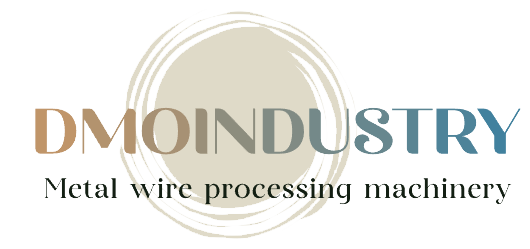Table of Contents
Advantages of Using Rolling ring drive Systems in Industrial Applications
Rolling Ring Drives are a type of mechanical drive system that offers numerous advantages for industrial applications. These drives consist of a rolling ring that moves along a shaft, providing precise and efficient motion control. In this article, we will explore the benefits of using rolling ring drive systems in industrial settings.
One of the key advantages of rolling ring drives is their high level of precision. These drives are capable of delivering extremely accurate positioning, making them ideal for applications that require precise control over movement. Whether it’s in a manufacturing plant, a packaging facility, or a robotics assembly line, the precision offered by rolling ring drives can help improve overall efficiency and productivity.
In addition to precision, rolling ring drives also offer excellent repeatability. Once a motion profile is programmed into the drive system, it can be repeated over and over again with consistent results. This is crucial in industrial applications where consistency is key, such as in the production of electronic components or medical devices. With rolling ring drives, manufacturers can rely on the drive system to deliver the same level of performance every time.
Another advantage of rolling ring drives is their versatility. These drives can be easily integrated into a wide range of industrial applications, thanks to their compact design and customizable features. Whether it’s a linear motion system, a rotary indexing table, or a pick-and-place robot, rolling ring drives can be tailored to meet the specific requirements of the application. This flexibility makes them a popular choice among engineers and designers looking for a reliable and adaptable motion control solution.
Furthermore, rolling ring drives are known for their durability and longevity. Made from high-quality materials such as stainless steel and aluminum, these drives are built to withstand the rigors of industrial environments. They can operate continuously for long periods of time without experiencing wear and tear, ensuring reliable performance day in and day out. This durability not only reduces maintenance costs but also minimizes downtime, leading to increased productivity and profitability for industrial operations.

Additionally, rolling ring drives are energy-efficient, helping companies reduce their carbon footprint and lower operating costs. By using less power to operate, these drives can contribute to overall energy savings in industrial facilities. This is especially important in today’s environmentally conscious world, where sustainability is a top priority for many businesses. With rolling ring drives, companies can achieve their production goals while also meeting their sustainability targets.
In conclusion, rolling ring drives offer a wide range of advantages for industrial applications. From precision and repeatability to versatility and durability, these drives provide a reliable and efficient motion control solution for a variety of industries. By choosing rolling ring drives for their operations, companies can improve productivity, reduce maintenance costs, and enhance sustainability. As technology continues to advance, rolling ring drives will undoubtedly play a crucial role in shaping the future of industrial automation.
How to Properly Maintain and Troubleshoot Rolling Ring Drive Systems
Rolling ring drives are a type of mechanical drive system that is commonly used in various industrial applications. These drives are known for their simplicity, reliability, and efficiency. However, like any mechanical system, rolling ring drives require proper maintenance and occasional troubleshooting to ensure optimal performance and longevity.
One of the most important aspects of maintaining a rolling ring drive system is regular lubrication. Proper lubrication helps reduce friction and wear on the drive components, extending their lifespan and preventing premature failure. It is essential to use the correct type of lubricant recommended by the drive manufacturer and to follow the recommended lubrication schedule.
In addition to lubrication, it is crucial to inspect the drive system regularly for any signs of wear or damage. This includes checking for loose or worn components, misalignment, and excessive vibration. Any issues should be addressed promptly to prevent further damage and potential downtime.
Another important aspect of maintaining a rolling ring drive system is proper tensioning of the drive belts. Over time, drive belts can stretch and lose tension, which can lead to slippage and reduced efficiency. Regularly checking and adjusting the tension of the drive belts can help ensure smooth operation and prevent premature wear on the drive components.
When it comes to troubleshooting rolling ring drive systems, one common issue that may arise is slippage. Slippage can be caused by a variety of factors, including improper tensioning of the drive belts, worn drive components, or misalignment. To troubleshoot slippage, it is important to first identify the root cause of the issue and address it accordingly. This may involve adjusting the tension of the drive belts, replacing worn components, or realigning the drive system.
Another common issue that may occur with rolling ring drive systems is excessive noise or vibration. This can be caused by misalignment, worn components, or improper lubrication. To troubleshoot noise or vibration issues, it is important to inspect the drive system for any signs of wear or damage, check for proper alignment, and ensure that the drive components are properly lubricated.
In some cases, troubleshooting rolling ring drive systems may require the expertise of a trained technician. If you are unable to identify or resolve the issue on your own, it is recommended to contact the drive manufacturer or a qualified service provider for assistance.
In conclusion, proper maintenance and troubleshooting are essential for ensuring the optimal performance and longevity of rolling ring drive systems. By following a regular maintenance schedule, inspecting the drive system for signs of wear or damage, and addressing any issues promptly, you can help prevent downtime and costly repairs. If troubleshooting is required, it is important to identify the root cause of the issue and address it accordingly to ensure smooth operation of the drive system. Remember, when in doubt, always consult with a qualified technician for assistance.




